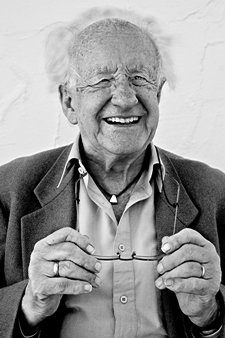School mediation – problems and solutions
By Johan Galtung
The world wave of mediation has reached school systems all over; in some countries less, in others more. Like in Spain, as evidenced by this heavily oversubscribed seminar on school mediation. When asked to express what they want to see happen in schools, the most frequent answer was convivencia, living togetherness. In one word, not as a composite concept. Like in Japanese, the one word is kyosei.
What does it mean, concretely? I would interpret it as positive peace at school. Something behavioral: cooperation for mutual and equal benefit. Equity. Something attitudinal, emotional resonance, I enjoy your joy, I suffer your suffering: Empathy. Harmony.
But the school is a big, holistic place. Not only children, but also adults, teachers and staff. And parents. Positive togetherness within and between all these four groups? A huge order.
Many simplify this to togetherness among children, and not positive, only less negative. Less bullying, to protect victims – parents demand that – and to use teacher time for teaching, not keeping discipline–the staff demands that. However, it all hangs together.
In addition, simplification runs against another big world wave of two values: diversity and equality, against homogeneity-verticality. Giant forces hitting our daily family, school, work life. Patriarchy yields to more parity between genders and generations. At work, the company run by a Board/CEO will be yielding to relations that are more cooperative.
What about at school? The school and nation-state systems emerged together. The state used schools to discipline all children in space and time, with classrooms and intervals, teaching the idiom and religion-faith of the dominant nation. The state imposed homogeneity all over the country with one school system. Plus, imposed verticality from the ministry down to the child with the poorest grade.
It is inconceivable that there should be no revolts. Nevertheless, there are.
My own experience with bullying around the world indicates that much is directed against the school system; often, a strong school hater bullying a weaker child suspected of being a school-lover.
The higher levels blame the lower ones–the teacher blames the bullies and their families, the rector blames the teachers–and lower levels the higher–bullies and parents blaming teachers and rectors. Much blame is flowing, few solutions. Yet zero tolerance for bullying is in.
Enters mediation within and between all groups. In SABONA (Zulu for I see you; I take you in) the opening question is “what does a good class, a good school look like?” aiming at solutions, the dream, the ideal. Followed by “what is reality, what happens?” and then the nostalgia, “was it better in the past?” and the nightmare, “what is the worst that could happen?” And once again, all four. For richer, deeper answers, from one at the time. Incredibly much is articulated.
The big wave for diversity and equality is based on human rights for the former and democracy for the latter. Mediation and solutions should use that trend, not work against it. Mediation is mutual questioning for solutions through dialogue, meaning through the word. Freud’s talking method. Ideally children and adults should arrive at solutions themselves, but mediators may softly–with ?, not with !–indicate ways of thinking, perspectives for diverse solutions.
The two values point to schools using participatory group work, much horizontal student-student learning, and not only vertical teacher-student teaching. Rooms for projects and for disciplines rather than classes, more freedom of choice. Computers and books, internet and teachers, concrete problems explored, using the needed resources.
Better build on the trend. A school can experiment with projects attracting students from different classes and dialogue among them. They may learn to disagree about answers to problems and to use dialogue to arrive at better answers, including with the teachers.
And why not involve parents in such dialogues, opening for more generation diversity? Asking parents to talk about their work and experiences, opening for social perspectives beyond one’s own family? Making the school a big convivencia, fostering equity and empathy.
If violence occurs, physical, verbal, symbolic, use mediation to identify unsolved conflicts and unconciled traumas, wounds from the violence of the past. Solve conflicts to avoid future aggression or apathy, concile traumas to avoid vengeance, revenge. Based on equity in mutual questioning, What If?, softly proposing, not imposing.
Space and time have to be made available for conflict work. The last hour on Friday for the week’s cases, with students and teachers–staff and parents?–preparing themselves. Maybe using a Round Table to see issues from many angles? Like breakfast table in the family? A general assembly at work? Or that glittering approach, Polynesian ho’o ono pono? Trying not to psychologize individuals, but to focus on problematic relations and structures to improve them; more horizontality, less exploitation-fragmentation-marginalization.
One simple formula is “conflict hygiene”, like showers, washing hands, brushing teeth for the body. Awareness of own goals and goals of others, of the clashes, and creative bridging of legitimate goals–meaning goals compatible with human rights and democracy. Use the councils of students, PTAs, staff meetings–and bring them together.
One experience: anecdotes, stories, narratives, of successful mediation may communicate better than principles; but both are needed.
Another experience: mediation uses mapping of conflicts (parties, their goals, the clashes); exploring the legitimacy of the goals, ends and means and creativity to bridge legitimate goals in a new reality. Questioning; knowledge of some law-human rights-basic needs of the body-mind-spirit; creativity–where are those skills taught? Hitch it on to the growing trend of university peace studies all over the world!
Originally published by Transcend Media Service here.
